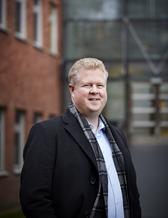Previously unknown antibiotic resistance widespread among bacteria
Genes that make bacteria resistant to antibiotics are much more widespread in our environment than was previously realised. A new study, from Chalmers University of Technology and the University of Gothenburg in Sweden, shows that bacteria in almost all environments carry resistance genes, with a risk of them spreading and aggravating the problem of bacterial infections that are untreatable with antibiotics.
The researchers used DNA from two public databases. The first database, ResFinder, contains a couple of thousand previously known antibiotic resistance genes in bacteria. The researchers expanded these with a large number of new resistance genes that they had found through an analysis of bacterial DNA. The known and new resistance genes amounted to 20,000 in total.
The second database, MGnify, contains large quantities of bacterial DNA from different sources such as bacteria living on and in people, in sewage treatment plants and from the soil and water. These were analysed to investigate how common the various resistance genes were in bacterial DNA. The study analysed 630 billion DNA sequences in total and the results showed that the resistance genes are present in almost all environments. Prior to this study, there was no knowledge about the incidence of these new resistance genes.
The method used by the researchers is called metagenomics, and is not new, but so far has not been used to analyse new types of antibiotic resistance genes in such large quantities. Metagenomics is a method of studying the metagenome, which is the complete gene set of all different organisms in a given sample or within a given environment. Using the method, it is also possible to study microorganisms that cannot be grown in a lab.
The study entitled Latent antibiotic resistance genes are abundant, diverse, and mobile in human, animal, and environmental microbiomes has been published in the journal Microbiome.
This study has been carried out by Salvador Inda Díaz, David Lund, Marcos Parras Moltó, Anna Johnning, Johan Bengtsson-Palme and Erik Kristiansson. The researchers work at Chalmers University of Technology, University of Gothenburg and Fraunhofer-Chalmers Centre.


